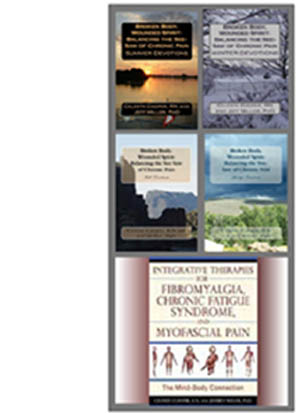Causes
Pelvic pain can be from many causes such as, vulvodynia, irritable bladder or interstitial cystitis, infection, vaginal atrophy, prostate problems/pain, testicular and or pain in the penis, pain in the urethra (where your urine comes out), rectal pain, ovarian cysts, ectopic pregnancy, neuralgia, endometriosis, inflammatory bowel diseases, irritable bowel syndrome, diverticulitis, and myofascial trigger points (MTrPs), but for this blog we are looking specifically at the bladder and the perineum (area of the urethra, penis, vagina, and rectum).
Myofascial trigger points have been identified as the greatest aggravator of chronic pelvic pain, and pain is not the only symptom. Pelvic floor problems can also cause a decrease in urine flow in men and women, erectile dysfunction, urinary retention (setting the stage for infection), urgency (always feeling like you have to urinate), and constipation.
For more on myofascial trigger points and myofascial pain see “Myofascial Pain” at my website and
my blog: Points That Need More Than Pondering: Defining Myofascial Trigger Points
Offending trigger points
Myofascial trigger points in adductor magnus (thigh), or internal oblique (abdomen), are capable of causing bladder pain and frequency, and MTrPs in the adductor magnus can cause a host of referred pain to groin and inner thigh, pelvic and pubic bones, rectum and vagina and can cause menstrual cramping (as can MTrPs in the rectus abdominus, abdomen), and trigger points in the internal oblique can also cause bladder difficulties. The muscles of the pelvis, and the multi-layered muscles of the pelvic floor can become tight, unforgiving and short due to MTrPs. Myofascial trigger points in pelvic related muscles can refer pain to the urethra, rectum, coccyx, or the crease of the buttocks.
This is speaking in generalities, but it’s important to understand that the source of your pain can be close by or well away from pelvis itself. Treating MTrPs, whether active (painful without touching) or latent (only painful with touched) that refer pain to a specific region is just as important as treating those directly relatable. Often times, those who claim to know myofascial trigger points do not understand the complexity, this includes physicians, physical therapists, and body workers.
Chronic myofascial pain in fibromyalgia, chronic fatigue syndrome, and pelvic dysfunction
Myofascial pain syndrome often co-exists in fibromyalgia, and has been identified in some chronic fatigue syndrome (ME/CFS) patients, chronic pelvic and bowel disorders. Myofascial trigger points are a peripheral nerve to muscle problem that lends to centralized (amplified) pain in fibromyalgia, interstitial cystitis, bladder difficulties, ME/CFS, IBS, and other overlapping conditions. This hypersensitive state is also present in these disorders. Ignoring the obvious bloodies the diagnostic waters and most importantly delays appropriate treatments and leads to flawed research.
Therapies
It is important to identify perpetuating factors, such as, co-existing hip problems, piriformis syndrome, pudendal neuralgia, low back or sacroiliac joint dysfunction, and other overlapping conditions, bringing them under control when possible. Pay close attention to aggravating factors such as, sitting too long or on hard surfaces and chairs that can’t be adjusted to your body type, over activity, infection, poor posture, wearing pants that are too tight, consuming offending foods, etc.
There are a variety of therapies to help you, including intravaginal and pelvic floor trigger point injections, external and internal massage of the perineum and in women the vagina, biofeedback, bladder retraining, transcutaneous electrical nerve stimulation (TENS), tennis ball therapy (as discussed in our book),
acupuncture, dietary changes, over-the-counter probiotics for the bladder, stretching movements, topical analgesics (such as oragel), oral analgesics, and of course specific myofascial therapy by a trained specialist. Sometimes, all are necessary.
Seldom are doctors well informed about myofascial pain s and trigger points, so I am a firm believer that women should see a urogynecologist, that men should see a urologist and in both cases, the physician should understand the role of the myofascial in chronic pelvic pain. The same is true for the physical therapist. Why? Those who do not understand the role of trigger points chronic pelvic pain and dysfunction may suggest traditional therapies, such as, Kegel exercise, which can worsen your symptoms, and when co-existing conditions such as piriformis syndrome, spinal disease, IBS, etc. are involved; a host of referral patterns are involved. This is why identifying ALL your pain patterns (whether you feel a trigger point there or not) is important information for your specially trained healthcare provider.
Always discuss your symptoms with your doctor to make sure other causes are ruled out. If your pain and dysfunction is not found to be from another source, please look for those myofascial trigger points and a specialized therapist, they are treatable.
Resources for you:
IC and Irritable bladder
Blatman Pain Clinic
What Your OB/GYN Should Know About FMS and CMP by Devin J. Starlanyl
Pelvic Floor Myofascial Trigger Points: Manual Therapy for Interstitial Cystitis and the Urgency-Frequency Syndrome by Jerome Weiss
Fibro Care Center
National Association of Myofascial Trigger Point Therapists
ICA – Physical Therapy
ICA – Pelvic Floor Dysfunction
International Myopain Society
IC Network
(Signature line appended, March 2018)
In healing,
Celeste Cooper, RN / Author, Freelancer, Advocate
Think adversity?-See opportunity!
~ • ~ • ~ • ~ • ~ • ~
Learn more about
Celeste’s books here. Subscribe
to posts by using the information in the upper right hand corner or use the
share buttons to share with others.
All blogs and comments are based on the author's opinions and are
not meant to replace medical advice.












4 comments:
Pelvic pain common among people and they can’t do their work easily. Of course physical therapist can help them to reduce their pain.
Hi, Weeks ago...okay...sigh...months ago...I posted about movement and fibro, myofascial pain and movement. I promised that I would continue with another article about how to move when you are in constant pain. Myofascial pain in Taiwan
Of course pelvic floor problems can cause a decrease in urine flow in men and women. I think we should get massage therapy to reduce this pain properly.Physical therapy
This disease is not much rare in the women. The women who don’t perform and physical activity are often having such disease. So they should approach the exercises which strong their pelvic floor.
physical therapy center
Post a Comment